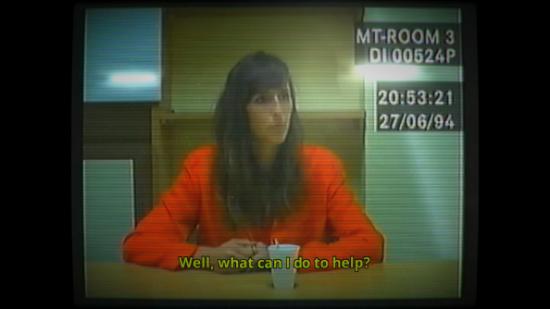Most of the time when we’re gaming, our eyes are fixated on the screen, with the place beyond the four corners of the display (which we call ‘reality’ or ‘IRL’ or whatever) fading out against the crisp, hyperreal glow of what’s in front of us.
After more games with abstract concepts? Check out the best indies on PC.
Things were different back in the day. In the ‘90s, games often required us to avert our gazes from the screen to progress through them. Perhaps we’d be hopelessly lost in the bowels of a dungeon-crawler, and would need some graph paper and a pencil to map our way out of its oppressively indistinguishable corridors. Or maybe we’d turn to magazines or guides (no internet or GameFAQs back then) to help us through challenges that we’d been banging our heads against for untold hours.
Throughout the 2000s, as games became simpler and prettier, the need for extraneous aids subsided. All solutions could usually be found on-screen – whether in the games themselves or on the internet – and even manuals became redundant. But over the years,there have been inspired moments in gaming that engaged us in unlikely ways – whether by notepad, other digital media, or by sending running around all over the country to answer payphones. Here are nine notable examples of when we’ve been forced us to look beyond the screen for solutions.
Her Story

There is no ‘gameplay’ to speak of in the quietly brilliant Her Story. Instead, you watch short, VHS-quality video clips of a woman being interviewed by the police and type in search terms based on what she says into a ‘90s police computer, piecing together the eponymous story by analysing the subsequent video clips you find.
If you had to define it by genre, I suppose you could call it a ‘story investigation’ game, and as it unfolds, you feel more and more like a hard-boiled PI, working tirelessly to get to the core of an intriguing case of death and deception.
Feeding into the detective fantasy of the game is the fact that you need to use a notepad to keep track of the story and the keywords you search for. You’ll be jotting down theories on what really happened, aggressively underlining key points using a red pen, and drawing lines between observations that you believe could be connected. The note-taking becomes part of the gameplay and the narrative process, making Her Story not only a throwback to the days when a notepad was a crucial gaming tool, but also a new form of interactive storytelling.
Keep Talking and Nobody explodes
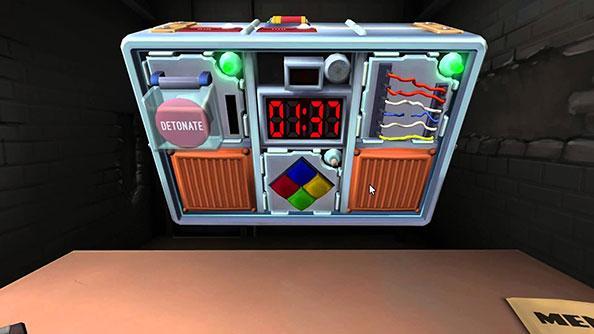
Think of the great action movies of the ‘80s, with their red wires and blue wires, and some sweaty guy in a ventilation shaft intently listening to someone giving instructions on how to defuse the bomb in front of him – the red fonts on its LCD timer ticking down second by terrible second.
Videogames have seen a fair bit of bomb defusal in their time, usually in the form of minigames where you need to solve a basic puzzle. But Keep Talking brings things closer to reality (the reality from ‘80s action movies, that is), as one person reads out instructions from a PDF document or printout, while the other person needs to put them into practice before time runs out.
Each bomb is designed differently, and the ingenuity stems from the way the person reading instructions needs to convey the various obscure symbols in a way that makes sense to both them and the defuser; with the timer ticking, you often need to say the first thing that comes into your head (my labels for the symbols include ‘three-legged A’, and ‘boobs-with-a-goatee’), making the game double as a pretty effective Rorschach test.
As with Her Story, things quickly spill out into the real world. Sure, the reader can technically just use another PC or tablet to read the instructions, but for the full immersive experience you need to print them out, ideally decorating them with coffee rings and stains for that ‘TV show police office’ look.
Fez
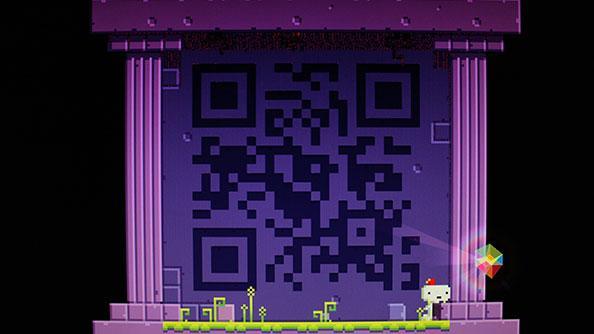
Fez was one of the games that helped kickstart the indie gaming revolution, and remains one of its most-loved creations. When you start playing, things quickly turns from innocuous puzzle-platformer into a cryptic world of symbols, mysterious languages and codes, requiring you to write vast codexes worth of notes to fully complete.
In fact, Fez is so replete with note-taking opportunities that there’s even a Tumblr blog dedicated to people’s doodlings relating to its puzzles. But it also engages us beyond the boundaries of what’s on-screen through QR codes – you know, those semi-functional barcode things that you’d find above urinals in bars and at bus stops.
QR codes may not be the revolution tech companies thought they’d be, but the way Fez utilises them is a neat little meta-touch. There are several of them dotted throughout, requiring you to use a smartphone to scan them, then follow the instructions to solve the puzzle. Obviously, this experience gets ruined if you’re still using a camera-less old Nokia 3310, in which case you’ll just need to Alt-Tab and look up the answer online (before engaging with the real world by going out and buying a smartphone).
Metal Gear Solid
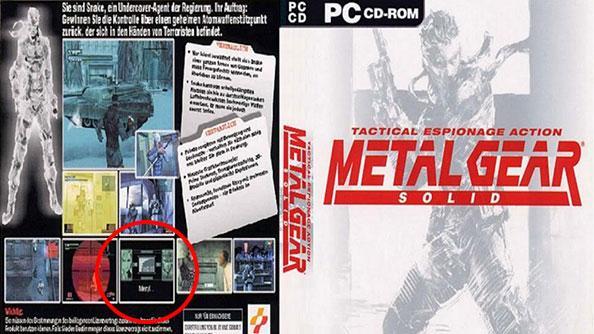
Solid Snake’s breakthrough into super-stardom may have come courtesy of his PS1 outing, but the game did get a (slightly shoddy) PC port. I’m fully taking advantage of this technicality to include it in this list on account of its excellent meta-gameplay elements.
The best of Metal Gear Solid’s fourth-wall breaks was undoubtedly the Psycho Mantis boss battle, in which you had to plug the controller into the second port of the PS1 to avoid having him read your every move. Unfortunately, this great moment was canned for the PC version on account of it not having controller ports (couldn’t they have just made us plug our keyboard into a different USB slot??).
One such meta-moment that has stayed in the PC version however, is the way you find out the codec frequency for contacting Meryl. When you’re first told by the Colonel to ‘check the CD case’, you assume that he’s referring to the in-game MO disk that you recently received, because why would you assume any different? Of course, we didn’t know quite know back then what a practical joker that Hideo Kojima was, and would never have guessed that we were being asked to check to back of the actual retail box that the game came in.
Oh, what fun we used to have with those bulky PC game cases. Sort of depressing to think that today’s equivalent would be to use Adobe Reader to check the PDF instruction manual (seriously, has anyone ever read one of those?).
I Love Bees (Halo 2 ARG)

And now for something a little different, here is one of the best examples to date of an alternative reality game. For the uninitiated, ARGs combine all types of technological and digital media with real-world events to engage players in an immersive, multilayered experience.
I Love Bees was the first ARG project from 42 Entertainment. It was a prequel to Halo 2, and also part of the game’s marketing campaign in the buildup to its release. So what do bees and Halo 2 have in common? The whole experience began when a mysterious website name – ilovebees.com – was hidden in the Halo 2 trailer. Inquisitive people who went to the site found a supposed beekeeping website, but which was hacked and filled with garbled code that seemed to contain a message of some sort.
Halo fans joined together to try and work out the strange messages and codes hidden in the site, which pointed to a tale about an AI called Melissa from the Halo universe that had become stranded on Earth. The story was steadily unveiled using websites, cryptic phone calls made to specific pay phones in the US, and puzzles. Players also had to call each other and cooperate to continue making progress. Each time a task was completed, a little bit more of the narrative was revealed.
The game proved such a hit that even though it was not originally written by Halo developers Bungie, it eventually became accepted as part of the Halo canon.
Year Zero
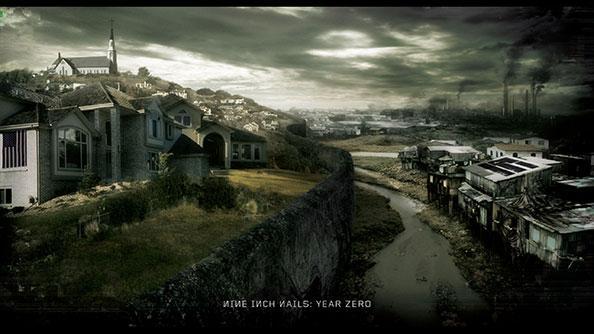
Off the back of the great I Love Bees, 42 Entertainment came back a few years later with another, even more ambitious ARG.
Year Zero was made in 2007 to promote Nine Inch Nails’ upcoming album of the same name. It was set in a near-future blighted by terrorism, mind-numbing drugs and strange supernatural phenomena. The game began when Nine Inch Nails fans discovered that the band’s tour t-shirt had highlighted letters which added up to form the words ‘I am trying to believe’ – the name of a secret website (iamtryingtobelieve.com) that talked about the dystopian events that would occur in 15 years time.
Over the next several months, people discovered USB flash drives and secret codes left around at Nine Inch Nails concerts, which would contain as-yet-unreleased songs by the band, followed by secretive messages about shady organisations, viruses released into global water supplies, and resistance movements. All of this culminated in the participants being invited via phone to a secret meeting, which was actually a free Nine Inch Nails gig that was raided by the police (staged, of course).
The game took the ARG experience to a whole new level, and nothing to this day has matched its scope and success.
Borderlands 2

Probably the neatest usage of QR codes in videogames came from cel-shaded, sharp-witted shooter Borderlands 2 and its Loot the World program, which most people seemingly only heard about when it closed down in October 2015.
Loot the World was an app that turned any QR code – from those you find on crisp packets or on Google, right through to those above the urinals I mentioned earlier – into a piece of in-game loot. It was an ingenious idea and great piece of marketing, essentially re-appropriating other QR codes into little pixelated squares of Borderlands propaganda.
The level and quality of item you’d get would be almost completely random, though there were several weapons that could only be unlocked using the app. Once a QR code was used by a player, it would become linked to the given item, so other people scanning a copy of that code would get the same item. The QR code would convert to an alphanumeric one, which you could then exchange for loot using the SHiFT vending machines around Pandora.
Suddenly, everywhere you looked in the street was an opportunity for Borderlands loot. A much more fun way of earning items than by downloading costly DLC, right?
The Dark Knight ARG
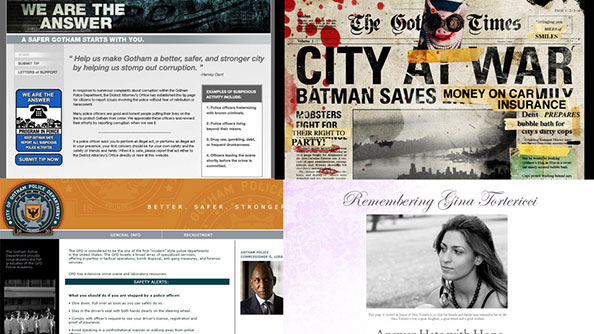
The one ARG to give Year Zero a run for its money was The Dark Knight, the immersive real-world treasure hunt that occurred in conjunction with the Batman movie. Once again, no-one had a clue that they were about to take part in a game, when unsuspecting visitors at the 2007 San Diego Comic-Con found $1 bills with the Joker’s face on them, and a link the the website, whysoserious.com.
The site called for people looking to be the Joker’s henchmen to meet at a certain place at 10am the next day, where a phone number written in smoke in the sky directed them to a man under duress, ordering them to get their faces painted as menacing clowns at Comic-Con, then wander the streets of San Diego in search of clues.
Meanwhile, millions of other participants around the world could play online minigames, receive phone calls, and take photos of themselves in Joker outfits at international landmarks, with the rewards being physical copies of the Gotham Times, secret websites and video clips that filled in the story between the Batman Begins and Dark Knight movies.
Unsurprisingly, the game was a chaotic success as an estimated 10 million people got involved, bolstering the publicity surrounding a movie that was destined to become one of the highest-grossing of all time.
Quantum Break

The unexpected news that Xbox One ‘exclusive’ Quantum Break would in fact be coming to the PC broke as I was writing this list, making it a conveniently topical final entry. Considering it’s coming from Remedy – of Max Payne and Alan Wake fame – we can expect some solid third-person action with a unique gameplay hook (in this case time-bending) and a great story, but one of its more audacious is that it’ll be played in tandem with a TV series.
When you play the game part of Quantum Break, you’ll be seeing the story from the protagonists’ side, and when you watch the show you’ll be watching the bad guys (led by Game of Thrones’ deliciously villainous Aidan Gillen). Your actions in the game will affect how the TV show plays out, with hours of alternative outcomes filmed for each episode. Conversely, each TV show episode will present you with ‘junction’ moments, where you get to make key decisions that will affect the next segment of the game. You still following?
In addition, watching the show will unveil secrets and information that will impact on the gameplay – a new weapon, perhaps, or a story branch that would’ve been inaccessible to you before.
There are still big questions over whether people will want to play a game and watch a TV show simultaneously, but kudos to Remedy for venturing into this uncharted cross-media territory.
Know any other games with fourth-wall breaking solutions? Inform us – via QR code or otherwise – in the comments below.
